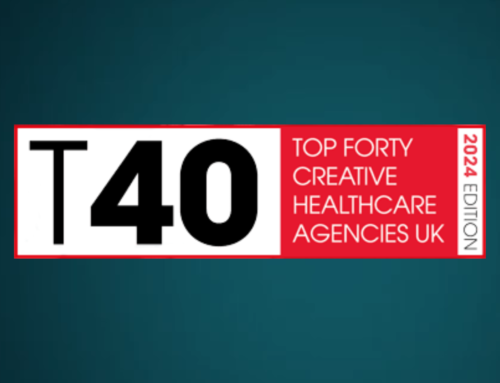
In our previous rare disease blog, we explored the advancements in genetic sequencing and how it is revolutionising research in this field. We also discussed the exciting possibilities it brings for diagnosis and treatment methods.
In this blog, we will take a look at how treatments of rare conditions can be personalised beyond genetics and understand why rare diseases need to be considered on an individual basis, from initial diagnosis to patient treatment plans.
What does personalised medicine actually mean
Genetic sequencing has revealed that the same rare disease can have numerous genetic causes, each affecting the genome differently, in turn affecting the type and severity of symptoms experienced by patients.1 Often appearing unrelated, symptoms can vary significantly between rare disease patients, making diagnosis difficult.2 In cases where a patient’s symptoms could be attributed to a range of conditions, healthcare professionals (HCPs) may have differing views on what diagnostic course of action to take and may start by looking to diagnose symptoms as a more common condition with established treatment methods.
Patients who don’t fit the criteria for these more common conditions experience a maze of specialist referrals and tests while HCPs try to understand their unique combination of symptoms. On average, rare disease patients receive three misdiagnoses and consult with five doctors before receiving an accurate diagnosis.3 This so called ‘diagnostic odyssey’ can be extremely frustrating for patients, whose condition may be worsening while they wait for answers.
To overcome the unique and complex nature of rare disease, a more individualised approach is required, otherwise known as personalised medicine. Personalised medicine isn’t the process of developing a brand new medicine based on one patient’s unique genome. A personalised, or precision medicine approach looks beyond a patient’s symptoms, considering their unique genomic, clinical and diagnostic data to generate an in-depth understanding of their condition. Using this data, HCPs can establish an appropriate diagnosis and long-term treatment plan that is personalised to each individual patient.4
Genomic sequencing has paved the way for a personalised approach to diagnosing rare disease, giving HCPs a vast amount of unique data at their fingertips. Alongside the rise of databases such as UK Biobank, we now have a more detailed understanding of how a person’s unique genome can dictate their health and the specific symptoms that they may present with. Trends observed across participants in these databases can be used to inform HCPs when following a personalised approach to medicine.5
Looking to the future, as data improves our understanding of the complex relationships between genetics, clinical outcomes and other environmental factors, the personalised rare disease patient journey will become more sophisticated and hopefully lead to better outcomes. The NHS has acknowledged the importance of treating rare disease patients individually with a personalised medicine approach, setting out their Rare Diseases Framework in 2021.6 The strategy has 4 main priorities, one of which being to help patients get a diagnosis, faster. Since then, 1000 new complex diagnoses have been made in the UK, to inform the most appropriate clinical care for rare disease patients.7 As the NHS pushes for improvement in rare disease diagnosis, awareness, treatment and care, personalised medicine certainly has an important role to play.

Barriers to improving the rare disease patient journey – gaps in treatment
Helping patients to get a diagnosis faster is one of the first crucial steps in a patient journey. Once rare disease patients have overcome the challenge of diagnosis, they must navigate their treatment options.
While a personalised medicine approach could significantly improve the care of rare disease patients in theory, the impact may be more limited when considering the treatment options that are currently available to patients. As currently only around 5% of rare conditions have a targeted treatment approved,8 many patients are suffering from ineffective disease management and the associated physical and emotional impacts.
Thanks to better investment into genetic research and development, the drug landscape is changing. The number of orphan drug approvals for rare conditions in recent years has risen quickly in recent years,9 providing many rare disease patients with a better standard of care.
Drug development plays a key role to improve the rare disease patient journey, but we can take alternative action to empower patients. For the approximately 95% of rare disease patients who don’t currently have the option of targeted drugs,8 patient-to-HCP communication is especially important. This is supported by another priority set out in the NHS Rare Disease Framework, increasing awareness of rare diseases among HCPs.6 A better understanding of the challenges that these patients face will equip HCPs to better handle non-treatment related concerns, which can have a massive impact on a patient’s attitude towards their disease.
Rare disease patients are commonly referred to as zebras, as when HCPs hear hoofbeats they would typically expect to see a horse, meaning that they are taught to consider common conditions first when diagnosing a patients symptoms. Further education can help HCPs to recognise rare conditions as zebras of the diagnostic world and use this understanding to consider a wider range of conditions when diagnosing patients.

HCPs can also develop a better understanding of the patient resources available, to guide patients towards more information and advice about their rare condition. Where HCPs may not always understand the full impact of rare disease on a patient’s life, they can support patients by introducing them to patient advocacy groups. These organisations play a huge role in uniting rare disease patients, enabling them to share experiences and gain comfort from knowing that they are not alone on their rare disease journey. For patients such as George, who suffers from rare condition mast cell activation syndrome (MCAS), working with support group Mast Cell Action and MCAS patients to empower those with the condition has been transformative. This has even led George to develop his own advice book based on his personal story, enabling him to share the smaller details that can make a difference to patients’ lives, such as what dental products to use, or paints which be less triggering for their condition.10

“Joining a Zoom group for people with Mast Cell Activation Syndrome (MCAS) has led me to my tribe”11
Patient advocacy groups can also be particularly useful to patients who are suffering from a rare disease with no approved treatment, as these organisations often help to recruit clinical trial participants for drugs that are still in the development stage.12 For many patients, the opportunity to trial a pipeline drug can provide a new sense of hope, and the reassurance that their condition isn’t being ignored.
The importance of HCP and patient education
For scientists, the prospect of novel, revolutionary drugs that could change the standard of care for rare disease patients is extremely exciting. But for patients, the idea of a completely new drug or treatment can be quite daunting. Patients need to be able to trust their doctor and treatment method, and this is often achieved by better communication and education. Relationships can be built between patients and HCPs in several ways, and like a personalised medicine approach these should be tailored to each specific patient. For example, some patients might want to learn more about their condition and understand some of the science behind their treatment method. Others might benefit from the opportunity to hear the experience of others who are on a similar treatment journey.

HCPs also need reassurance and detailed information about treatments, so that they can confidently advise the correct treatment plan for patients and provide them with the appropriate information they need. It can be reassuring for patients to leave their meeting with a HCP having been provided with a range of resources to refer to throughout their treatment journey, whether these are a brochure about the side effects of treatment or an online webpage with a range of treatment specific resources.
For pharmaceutical companies, this is an opportunity to build trust with patients and HCPs, establishing themselves as a brand who care about improving rare disease patient outcomes. Strong relationships can be achieved by understanding of the challenges that rare disease patients face and taking action to provide appropriate support. Working with patient advocacy groups can provide brands with the insights they need to create valuable resources for their patients that focus on the issues that matter to them, whether this may be introducing a patient support hub, a dedicated website, or videos showing patients how to use their treatment device. All of these patient communications contribute to the rare disease patient journey and can make patients feel heard after what can be a long and complex journey.
A personalised medicine approach informed by real-world patient data is already improving the diagnosis and treatment of rare disease patients. To further enhance the patient journey, a personalised communication approach offers engaging educational materials to support HCPs and patients, helping them to feel in control of their condition. IGNIFI collaborates with rare disease brands to identify HCP and patient needs, such as understanding treatment side effects, a drug’s mode of action or dealing with patient objections. We can support you in overcoming the unique challenges associated with rare disease, which can be delivered as part of an omnichannel approach and created for specific HCP or patient profiles to ensure that communications are tailored to each individual.
Get in touch to discuss how IGNIFI can help support you and your rare disease brand or find out more here.
In our final rare disease blog of the series, we will take a global view of rare disease, to evaluate how research and development approaches differ between countries, and what more can be done to improve the standard of care for patients worldwide.








